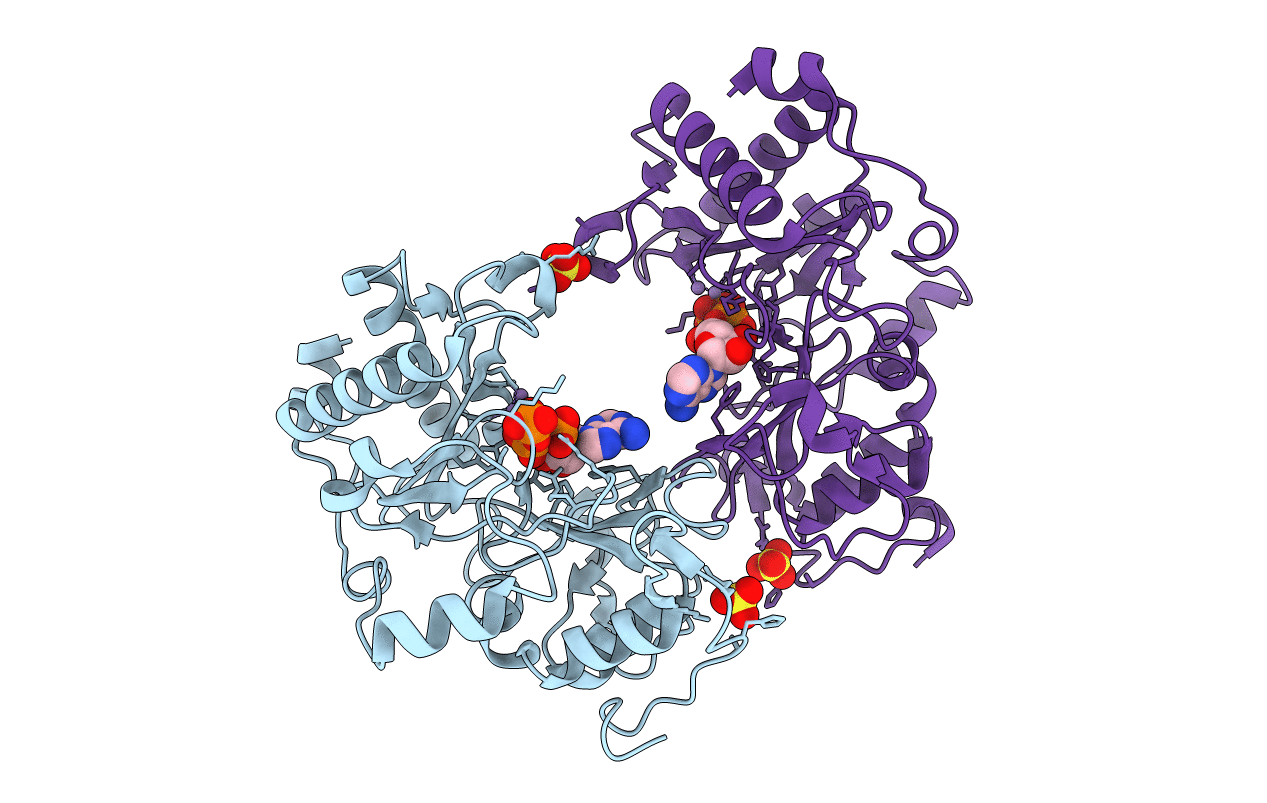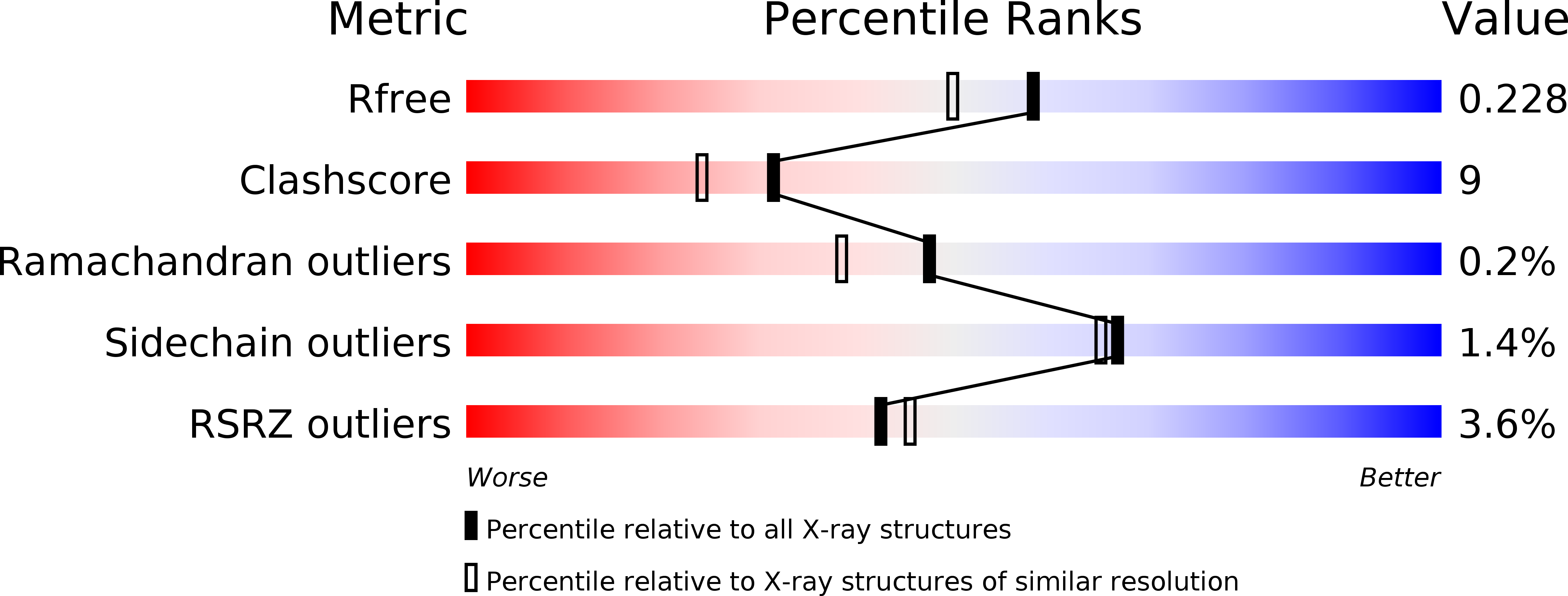
Deposition Date
2005-12-07
Release Date
2006-05-23
Last Version Date
2023-08-30
Entry Detail
PDB ID:
2FAQ
Keywords:
Title:
Crystal Structure of Pseudomonas aeruginosa LigD polymerase domain with ATP and Manganese
Biological Source:
Source Organism:
Pseudomonas aeruginosa (Taxon ID: 287)
Host Organism:
Method Details:
Experimental Method:
Resolution:
1.90 Å
R-Value Free:
0.22
R-Value Work:
0.19
R-Value Observed:
0.19
Space Group:
P 21 21 2


